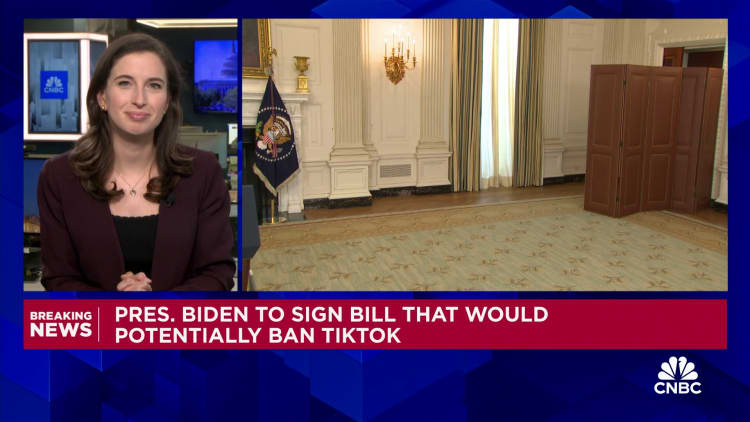Ali and Jamila Wright, co-owners of Brooklyn Tea.
Courtesy: Brooklyn Tea
A look at the state of Black employment in America reveals a mixed picture: Great progress has been made in the age of the Covid-19 pandemic and beyond, but much remains to be done.
In the nearly four years that have passed since the pandemic upended the U.S. economy, Black progress has been unmistakable: a surge in income that has outpaced gains for both whites and Hispanics and an unemployment rate that has fallen by more than a percentage The current level in January 2020 and the general feeling that the collective awareness of inequality in the workplace has been raised.
However, racial disparities in income still exist. Black workers are still significantly underrepresented in some professions, particularly in high-end technology, and efforts to address some of these issues have fallen out of favor amid criticism that they have gone too far and are inefficient.
Overall, however, there is an optimistic feeling that real progress has been made.
“This recovery has really pushed the boundaries of what policymakers thought was possible for Black workers,” said Jessica Fulton, interim president of the Joint Center for Political and Economic Studies, a Washington, D.C.-based think tank that focuses on people issues and communities of color. “We found ourselves in a situation where people accepted that unemployment among blacks would always be high and that there was nothing they could do about it. So I think this is an opportunity to continue to push the boundaries of what’s possible.”
Looking at the data, the numbers are encouraging.
The Black unemployment rate was 5.3% in January, up slightly from December but still near the all-time low of 4.8% reached in April 2023. The number of Black people employed totaled nearly 20.9 million this month, a 6.3% increase from February 2020, a month before the pandemic hit, according to the U.S. Bureau of Labor Statistics.
From a salary perspective, the numbers are even more encouraging. For Black workers, weekly pre-tax earnings at the end of 2023 have increased 24.8% since the first quarter of 2020. That’s higher than the 18.1% increase for whites and the 22.6% increase for Hispanics during that period. Of the groups the BLS measures, only Asians saw larger wage increases at 25.1%.
Still, the unemployment rate for whites is significantly lower, at 3.4% in January.
“High unemployment among black workers is a solvable problem,” Fulton said. “There are challenges that we need to address. We need to figure out how to address discrimination, we need to figure out how to address unequal access to quality workforce development. We need to figure out how to close job gaps.”
Focus on technique
One of the areas where the greatest disparities exist for underrepresented groups is technology, where Blacks and others hold few positions and even fewer in leadership roles.
The situation is well documented. According to a McKinsey & Company study published in 2023, while Black people make up about 12% of the U.S. workforce, they hold only 8% of all tech jobs and just 3% of leadership positions.
There are several groups working to eliminate inequality with varying degrees of success.
Those involved tell similar stories. Black workers are interested in technology and believe there are opportunities. Companies don’t understand the real benefits of a diverse workplace. Given the backlash against diversity, equity and inclusion efforts, options are limited.
“Diversity isn’t just a warm and fuzzy feeling. “Numbers prove you get a better return on investment,” said Autumn Cox, a software engineer at a major Northwest tech company, who asked not to be identified by name.
Cox, who is Black, holds a prominent position in the technology field, where she has worked for well over a decade while both climbing the corporate ladder and trying to help the people in her cohort succeed.
Autumn Cox.
Courtesy of Autumn Cox
In addition to her professional responsibilities, she is involved in several organizations that strive to help others succeed in the technical field. These include Rewriting the Code, a global network focused on women founded in 2017, and MilSpouse Coders, which supports military spouses and where Cox serves as chair of the education committee.
Companies that build diversity the right way thrive, she said. Those that have not suffered noticeably, in the form of inadequate products and databases that do not reflect the dynamics of the real world.
“The lack of diversity has made very big, wonderful tech companies feel bad about having premature products,” Cox said. “One of the best ways to combat data bias is diversity, and diversity from different backgrounds. If you look at the boards of most large AI companies, do you see diversity there?”
In fact, cases of racial bias are still seen as a significant problem, particularly in the technology sector.
According to a survey by tech career marketplace Dice, around 24% of tech workers reported experiencing racial discrimination in the workplace in 2022, up from 18% the previous year. While some companies have changed their corporate culture, many others are left behind.
“There are some good stories out there,” said Sue Harnett, founder of Rewriting the Code. “Goldman Sachs and Bank of America are doing a great job of not just trying to recruit people, but actually bringing them on board and converting them from interns to full-time employees.”
Rewriting the Code works with workers and companies to address diversity issues. The organization focuses particularly on college women and supports them on their career path during the first six years or so.
On the other hand, Harnett still sees too many symbolic measures that don’t go far enough.
For example, she said some companies focus on historically black colleges and universities, which does little to help attract a capable and diverse workforce.
“I cringe when I talk to a company and ask them about their diversity recruiting strategy and the answer is that they work with HBCUs,” she said. “It can be part of the strategy, but it shouldn’t be the only strategy.”
However, Harnett understands how hard the work can be.
“The amount of money you have to invest to find that talent can be overwhelming, but I think there are solutions out there, so I’m personally optimistic,” she said. “I wish we had made more progress by now. But it is the companies that will drive this forward.”
The small business perspective
Sometimes the answers can be found closer to home.
Ali and Jamila Wright are co-owners of Brooklyn Tea, a small New York City-based business that has expanded to Atlanta and is looking for further growth opportunities.
When it comes to hiring strategy, they focus almost exclusively on underrepresented groups with diverse employment needs. For example, they hire actors between shows or other workers in other jobs who have been laid off and need a bridge until they find another job.
Ali and Jamila Wright, co-owners of Brooklyn Tea.
Courtesy: Brooklyn Tea
“All of our employees are people of color,” Ali Wright said. “We have people of color, we have people who are binary or non-binary. So because we’re diverse ourselves, it’s just easier to hire people who we know are systematically disadvantaged.”
Brooklyn Tea benefited from a relatively booming small business environment, particularly for Black and Latino entrepreneurs.
According to the Small Business Administration, the share of Black-owned businesses among Black households rose from 5% to 11% from 2019 to 2022, the fastest increase in 30 years. The increase comes as the number and dollar value of loans to Black-owned businesses have more than doubled, and the share of the SBA’s loan portfolio to minority-owned businesses has increased from 23% to over 32% since 2020.
However, racial dynamics in the U.S. remain a tenuous dynamic, and there is always the possibility that progress will be pushed back, especially given increasingly hostile attitudes toward DEI initiatives. Critics say the approach has led to a misallocation of resources, particularly after controversy at Ivy League schools.
“From 2020 to 2022, we all felt the greatest potential and hope, even in the midst of a pandemic,” said Jamila Wright. “We received so much money and cooperation from companies, and this attack on DEI impacted some companies, including ours.”
But the controversies have mostly led to a reconsideration of how to achieve diversity, rather than a general retreat from initiatives.
For example, a Conference Board survey in December found that no HR leaders planned to scale back diversity efforts. Still, Jamila Wright said she’s cautious about the future.
“I think history has taught us that when it comes to race in America, nothing is over quickly,” she said. “So we’re just trying to figure out how to be smart in situations where we shouldn’t be smart. We have to be prepared for that.”

Source link
2024-02-27 20:44:38
www.cnbc.com










